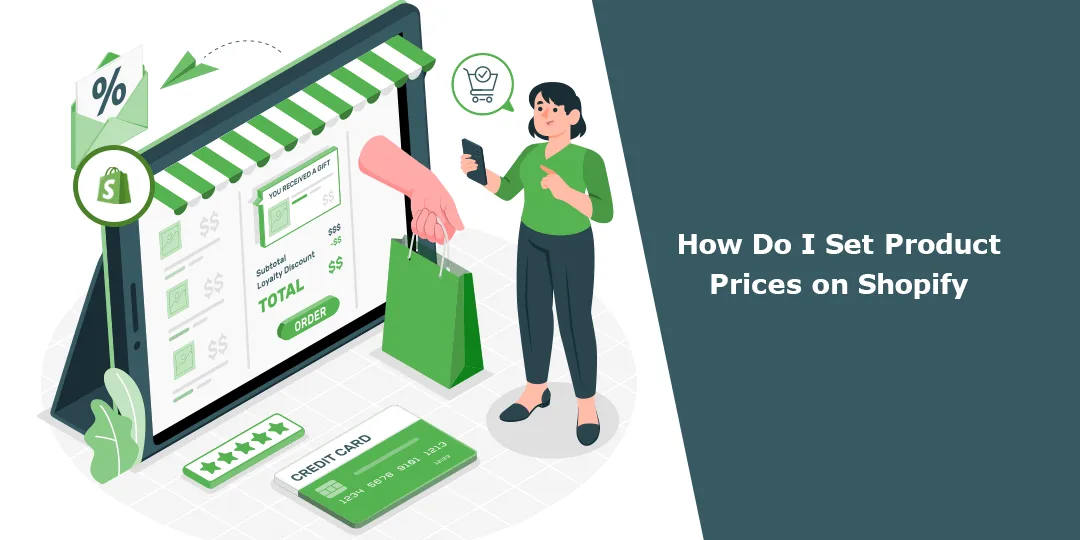Are you looking to start your own e-commerce store using Shopify and wondering how to set product prices effectively? Pricing your products correctly is crucial for the success of your online business. Setting prices too high may drive potential customers away, while setting them too low could negatively impact your profitability. In this blog post, we’ll walk you through the steps to set product prices on Shopify, as well as some pricing strategies to help you make informed decisions.
How to Set Product Prices on Shopify?
Step 1: Access Your Shopify Dashboard
Before you can set product prices, you need to log in to your Shopify admin dashboard. If you haven’t created a Shopify store yet, you can sign up and get started quickly.
Step 2: Add Products
If you haven’t already added your products to your Shopify store, you should do that first. To add products, go to the Products section of your dashboard and click “Add product.” You’ll need to provide product details like the title, description, images, and more.
Step 3: Set Product Prices
Once your products are added, it’s time to set their prices. Here’s how to do it:
From your dashboard, click on Products and select the product you want to price.
Shopify offers different pricing methods, such as “Price”, “Compare at price”, and “Cost per item”. The Price field is where you’ll set the actual selling price.
- Set the selling price: Enter the price you want to sell the product for in the “Price” field. Make sure to consider your costs, competition, and your desired profit margin when determining the price.
- Compare at price: If you want to show a higher original price (e.g., for a sale or discount), you can set a “Compare at price” to make the discounted price more attractive.
- Cost per item: If you want to track your costs, you can enter the cost per item, which can help you calculate your profitability.
After you’ve set the prices, make sure to save your changes.
Step 4: Apply Pricing Strategies
Setting prices isn’t just about choosing a number; it involves strategy. Consider the following pricing strategies:
- Cost-plus pricing: Add a markup to your product cost to ensure you cover expenses and make a profit.
- Competitive pricing: Research your competitors and set your prices to match or beat their offerings.
- Value-based pricing: Set prices based on the perceived value of your product to customers.
- Psychological pricing: Use pricing tactics like $9.99 instead of $10 to make products seem more affordable.
- Dynamic pricing: Adjust prices based on factors like demand, supply, and customer behavior.
- Bundling and upselling: Combine related products into bundles or offer higher-priced options to increase the average order value.
- Seasonal pricing: Adjust prices for holidays, seasons, or special events.
Step 5: Monitor and Adjust
Your pricing strategy may evolve over time. Monitor your sales, customer feedback, and competitors regularly. Shopify provides tools and apps to help you track and adjust your prices as needed.
Why is the Right Pricing Strategy Crucial for Your Shopify Store?
The right pricing strategy is crucial for your Shopify store for several reasons:
- Profit Maximization: A well-thought-out pricing strategy can help you maximize your profitability. By setting prices that cover your costs while providing a reasonable margin, you ensure that your business remains financially sustainable and profitable.
- Competitive Advantage: Effective pricing can give you a competitive advantage. If your prices are competitive and align with the perceived value of your products, you’re more likely to attract and retain customers in a crowded e-commerce marketplace.
- Customer Attraction: Pricing can be a powerful tool to attract customers. Discounts, special offers, or competitive pricing can draw in new customers who are looking for a good deal. A compelling initial price can serve as a hook to get customers to explore your products.
- Customer Retention: Consistent and fair pricing can help build trust with your customers. If your customers know they can rely on your prices, they are more likely to return to your store for future purchases.
- Profit Margin Variability: Different pricing strategies can result in varying profit margins. By choosing the right strategy, you can control your margins and adapt to market conditions, ensuring you maintain a healthy bottom line.
- Market Responsiveness: The e-commerce market can be dynamic, with price changes, competitor moves, and shifts in consumer behavior. The right pricing strategy allows you to be responsive to market changes, adapting your prices as needed.
- Long-Term Success: A sustainable pricing strategy is essential for the long-term success of your business. Consistently undercutting your competition or operating with razor-thin margins may not be sustainable in the long run. The right pricing strategy supports your business’s growth and longevity.
Wrapping Up:
Setting product prices on Shopify involves several steps, from adding your products to applying effective pricing strategies. Remember that pricing is not set in stone; it’s an ongoing process. By carefully considering your costs, market conditions, and customer expectations, you can find the right price point for your products and maximize your e-commerce success.
To apply any kind of pricing strategy to your Shopify business, consult a Shopify Developer.
If you’d like to explore more pricing strategies or need guidance on specific aspects of Shopify, feel free to ask. Good luck with your e-commerce venture!








